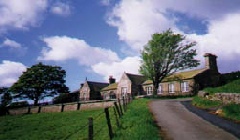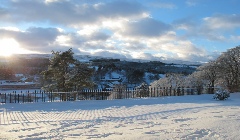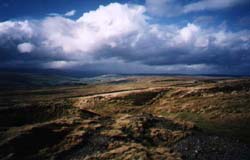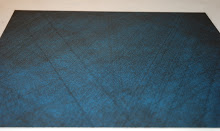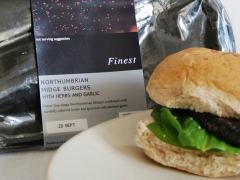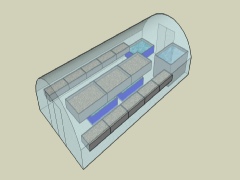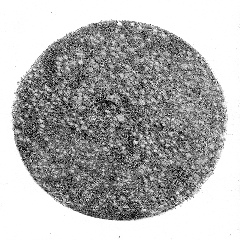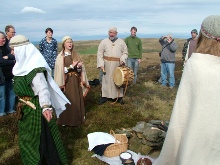Gillard Other places and people. Bryony is an artists who works with performance, text and objects. She had done work as assistant curator for South West Galleries such as Arnolfini, Plymouth Arts Center and the Newlyn Art Gallery.
She graduated from her BA in 2006, and was looking at alternative approaches to post-graduate study and continued learning. Questioning whether or no you need to do a masters as an artist. Within the lecture she talks about her research on MA and other opportunities studying in Europe, is cheaper that studying in UK? And interesting arts projects, that use exchange.
She begins with Studying Abroad.
She looked at masters for a while, as she has friends who studied in UK but couldn’t find one that resonates with her practice, and was very aware of fees going up. She personally is interested in expanding networks internationally, this is why she looked at international Ma’s.

The Piet Zwart, Ma Fine Art,
Available at:
http://pzwart.wdka.nl/nl/courses/mfa/
-
The Piet Zwart Institute, Masters in Fine Art, it focuses on performance art, the fees are around 2,000 euros a year, and it’s a 2 year programme. She thinks equality of education is high here. The teaching staff are high in the art world. Overall it is very studio based, and not as good for collaboration. The course considers critical reflection, debate and action as being integral to self-directed artistic research and practice. there is a Final show for both years, shown at Tent, Rotterdam, quite prestigious.
- The School of Walls and Space, Royal Academy of Visual Arts, Copenhagen, Denmark. Is located in a very busy and expensive city, the Arts Academy is located in the Regal building. Although it is very glamorous, the department is radical. Speaking in terms of the role of an artist as a agent of society. Niels Norman is the professor who overlooks course, he is well known in the art world. Looking at Public art and carbon planning, the course is democratic with a total of 25 students and the works produces are mainly collaborative, made as a collective. The course is very social; they eat together everyday. They look at Art acting within the public realm. The Course is Free! yet your living and working is where the it becomes expensive. Lots of young danish students, get full funding and grants, Bryony felt there was a slight imbalance between older, unfunded students and young danish loaded students.
- CalArts, Mfa programme in art, at the California institute of art. Fees are 40,000 a year. Bryony explains that if you can find a way to do it sounds like an amazing place to study, ‘the place is insane’. It is very multi-disciplinary almost a hot house of creativity. It is well connected to art world in US. It has everything you need there and you live on the campus. Also there is the opportunity for scholarships, she gives the example of Fullbright a UK/US scholarship award scheme.
- The Programme in Art, Städelschule, Frankfurt am Main, Germany. There are good tutors such as Douglas Gordon etc. Alike the Royal Danish Academy one professor who roles the department, there is a relationship with one tutor and practice. It is internationally renowned, the gallery attached called Portikus. The course focuses on individual practice, and progression. Looking at art history and art theory as a integral part of the course and your practice.
- Masters in fine art, at the Dutch Art Institute, ArtEZ, Arnhem. There is one small department and one course. It’s about collaboration and thinking or your position in the world as an artist. There are ways around doing Ma and still living in the UK, they meet for one week a month, living together in a hostel doing lectures, seminars, workshops 9am-10pm for 5 days. Bryony explains how although it sounds ostentatious, with getting jobs etc and not being able to speak dutch. It works well costing 2000 a year. A lot of international travel, as its a roaming academy. She has been to the Istanbul biennail etc. In January she goes India for 10 days for research for her practice and they pay all travel and stay as its subsidised. One big factor is there is no studio space, so she is requires to show work through computer, this depends on you and what work you produce, as Bryony works with text this works well, but you need a space to work in at home. It is very international student wise, this is exciting, as she believes it is nice to be in a vibrant cultural mix to talk about art, and the course is taught in english. It’s a 2 year course. Due to her background with galleries, she was pleased to see that it has three long-turn partners, If I can’t dance I don’t want to be part of your revolutions, a publication Casco, and one other. They have a department of institutions instead of tutors, so you work with them on research, or practice in response. Bryony maintains this by flying from Bristol to Amsterdam, through easy jet, Yearly it is costing her about 3,000 including travelling and fees.
Independent art schools.
Asking the question How do artists factor in and get involved?
- Islington Mill Art Academy, Islingron mill studio project is run by artists. All are similar to associate themes, peer led, by artist for artist, by a group for a group without hierachy.
- Manchester the public school, international. The public school, originally set up in California, hubs around world, there’s no curriculum, and is generally not accredited, it’s more for you. Doesn’t have affiliation to public institutes. A framework in which to operate. Propose classes and talks. Organising peer led learning
- Fairfield International, Ryan Gander, a well known artists, at his house, invites 12 people to come to his art school, usually international and young british Artist. They get a studio and living space, and he uses his networks for talks etc.
- Suffolk Crate – collaborative research group, a small group of artists who work on peer led learning. Working with universities on crits and curatorials.
- Margate Turps Banana, is for painters, a magazine. It’s a year long programme, studio complex. Allowing access to their network, studio visits and crits.
- Mass Alexandria, Alexandria, is an interesting art led space. Seminars, workshops, lectures by artist, with space for exhibitions and performance.
- Open school east, choose 12 associate artists to work on project for year. Based within community of Hackney. Building works as community space also. They have studios, free programme but do community activities as payment. Work reflects the local environment. It is Peer led.
- SOMA, Mexico, is an established artist led space, different educational projects, events performances and talks. There is a Masters programme for 20 students or 6 week residency in english, arts theory including lots of reading, unsure of funding for this.
- Mountain School of Art (MSA), Los Angeles the oldest artist led school, there is a 3 month program yearly not accredited. Consisting of an intense schedule of talks etc. Links to ucla, uni at California. With interesting crossover.
Associate schemes.
A good place to start and continue work and network within your city or a new city is through associate schemes. Bryony herself is an associate of Spike Island. She expresses it to be a very good scheme one that you can invest into. They work into budgets for trips and travel grants, it’s fairly established, you can nominate talkers, any artist who work with spike island you can ask for studio visits, crits ask for specific artists, free entry to events, small library.
PAC home- Plymouth, sort of a smaller version of spike island. A membership for artist, curators and writers to engage in contemporary arts, crits, talks, 1 to 1’s, away days, funding and residencies. Helping to widen professional networks.
Eastside Projects, Extra Special People, is an active scheme providing more opportunity for artists to show their work.
Warp, g39, Cardiff. Is artists led, on a smaller scale, yet very engaged with mentoring talks etc there is a similar branch for North Wales, Prawn.
For more information you can visit this website www.transartists.org/education
Finally, Detroit, an artist-led initiative, looking specifically at why and how work is made. Bryony and Hannah Steel (Library of Independent Exchange) gained funding through Spike Island, by presenting the idea for a new artist led project in Bristol. Detroit, focuses on redevelopment and regeneration, and the fictional overlay of two different cities. Looking outside of bristol and expanding networks. They began by looking at Detroit Michigan, USA, a donut city, lots of industry, it is now a post industrial area. Interesting space for creativity, music. Bristol itself is a pastoral rural place. She stated that not all projects are about Detroit, but mainly the idea of opening up a space between to places. She is interested in opening up the opportunity for artist residencies, not just static exhibitions and working on the longer process with artists. Hoping to Offer residencies that fit peoples lives, and jobs. Working with 3 artists for 2 months, developing relationships, discuss why we make art, conditions and processes to make work not final bit, looking at term artistic research. We all have this, expanded search, through images and other artists. Show works in progress, presentations of research, parties etc.


